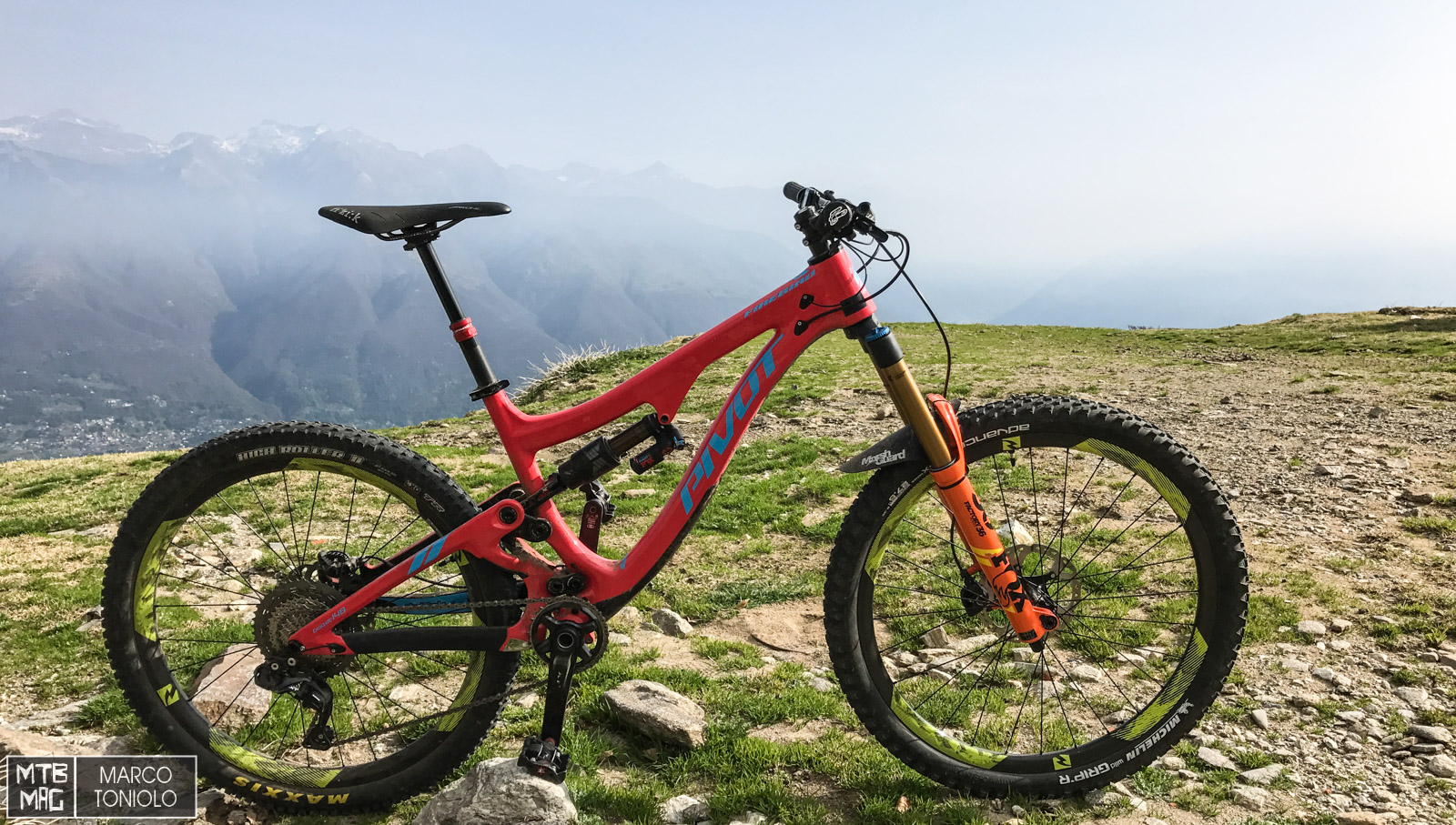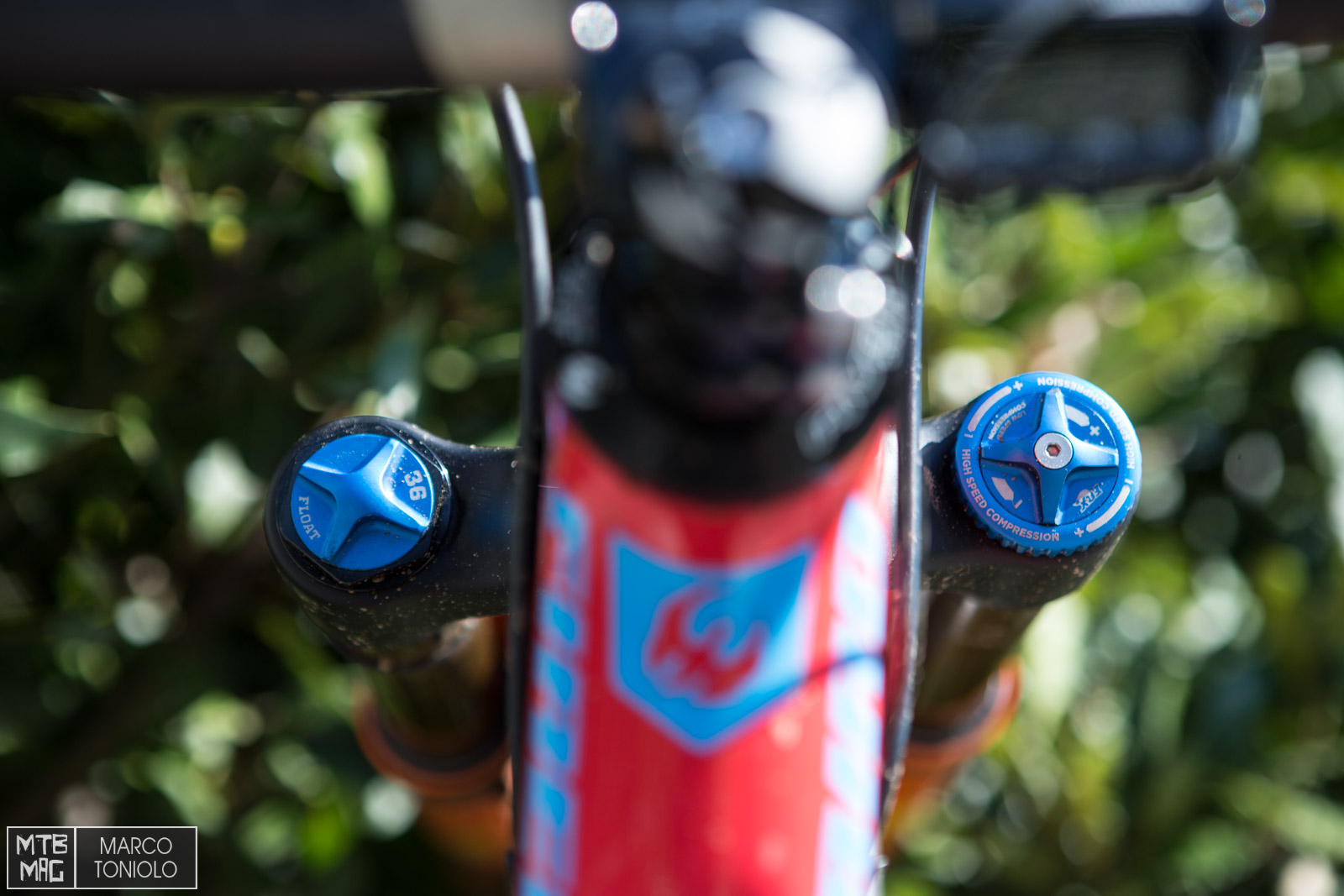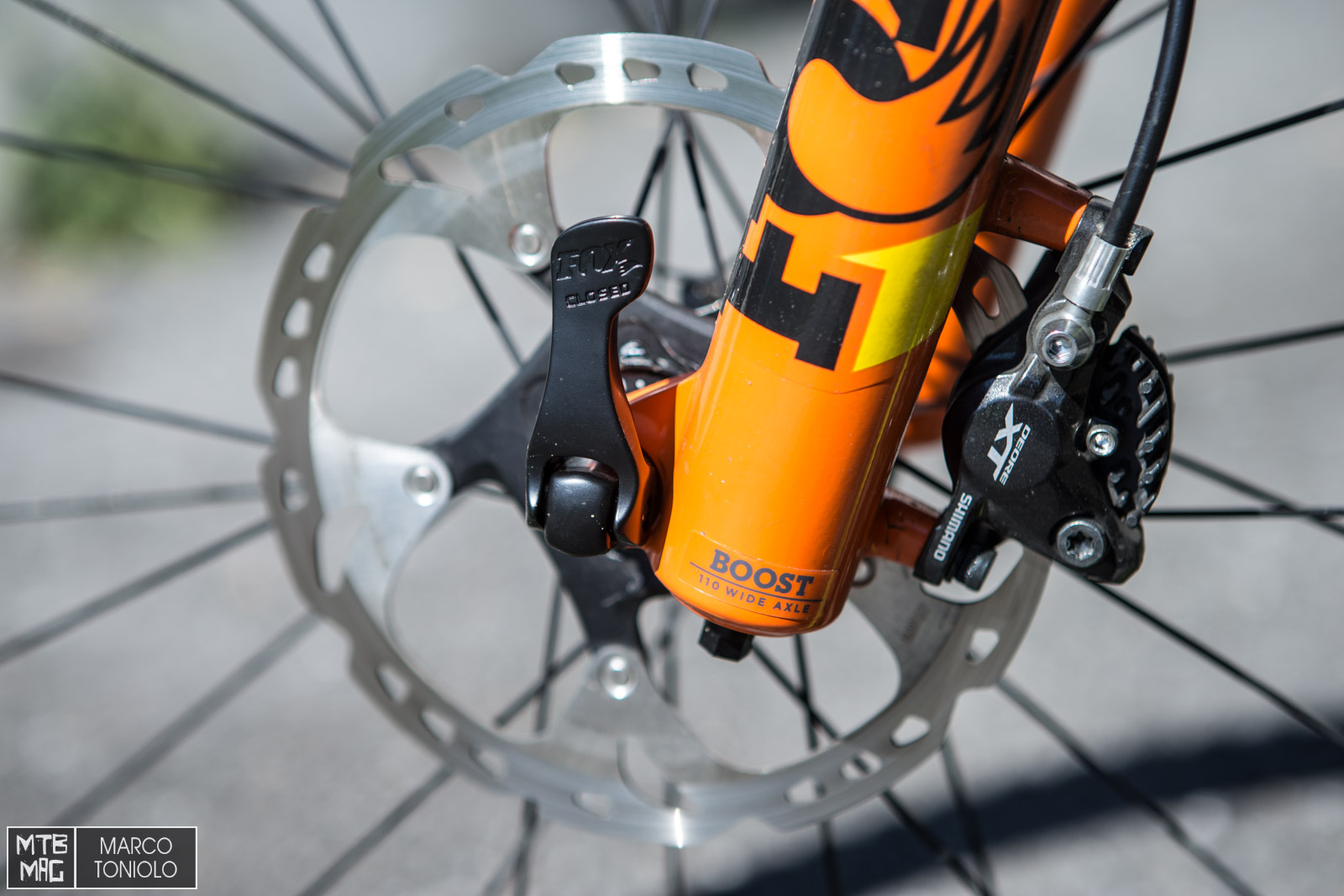[Tested] New Fox Float 36
[ad3]
Fox has maintained a wise custom of sending products to media for advanced testing before they are presented to the public. This way, you can read an in depth test instead of the usual cut and dry press release. The new 36 is no exception, in fact we’ve been riding it for about a month, bolted up to the Pivot Firebird which you can read the review of right here.
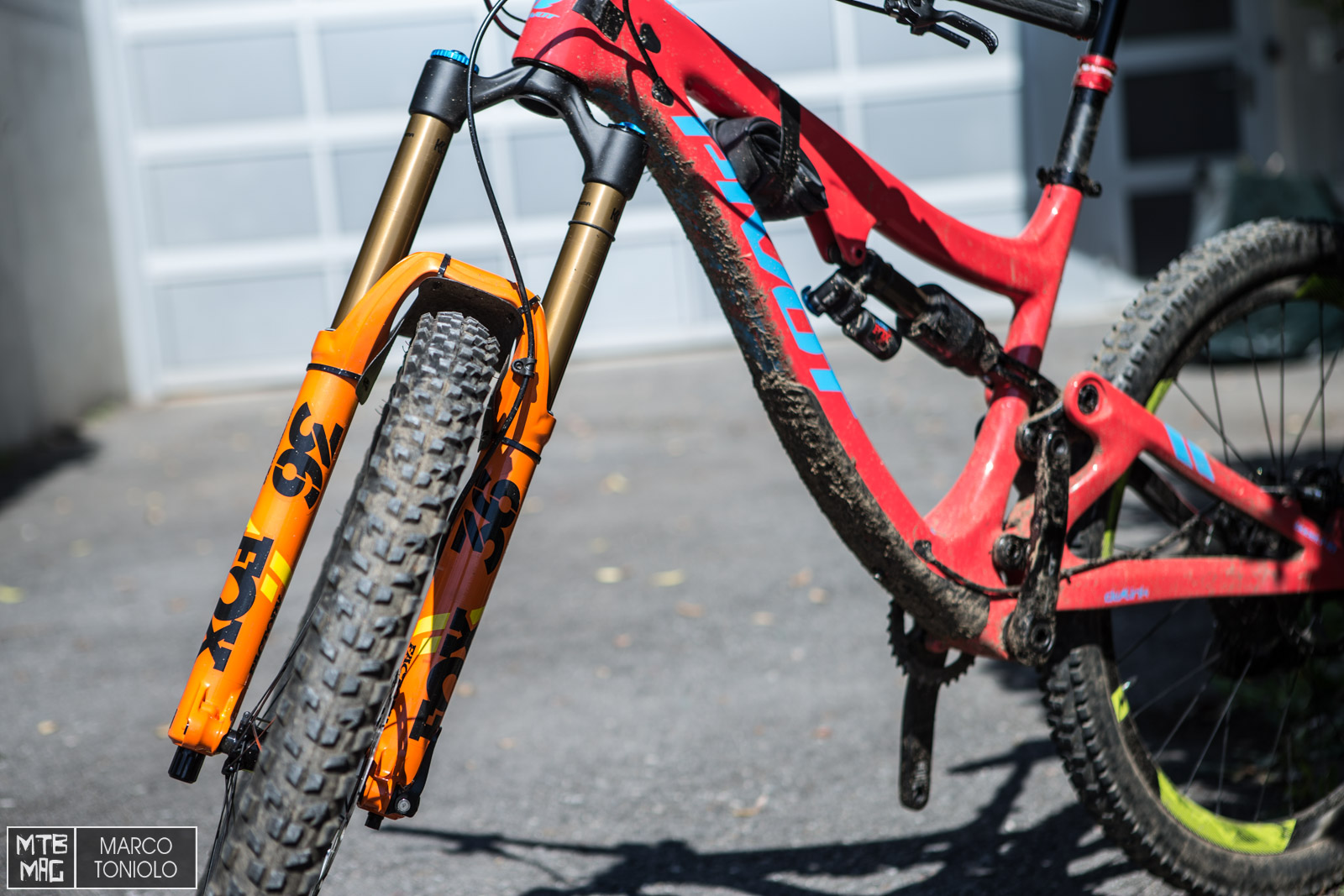
What’s new
The 36 had been completely overhauled three years ago. In 2017 it see some new major updates: internally, aesthetically and with the exception of a new eBike chassis, the fork has been trimmed down a bit.
• New FLOAT EVOL air spring
• FIT HSC/LSC, FIT4 and FIT GRIP three position damper options
• 15QRx110 mm, 15QRx100 mm, or 15/20 mm convertible thru-axle
• Travel options:
27.5” – 150, 160, 170 mm
29” – 150, 160 mm
26” – 100 mm (831), 160, 180 mm
• 1.5” tapered or 1-1/8” (26” only) steerer tube
• E-Bike-specific chassis available
• Factory Series models feature Genuine Kashima Coat
• Performance Elite models feature black ano upper tubes
• Matte Black
• 1990 grams with cut steerer as tested
Price
Factory – HSC/LSC $1049(tested), FIT4 $979
Performance Elite – HSC/LSC $959, FIT4 $889 Performance – OE only (with GRIP damper)
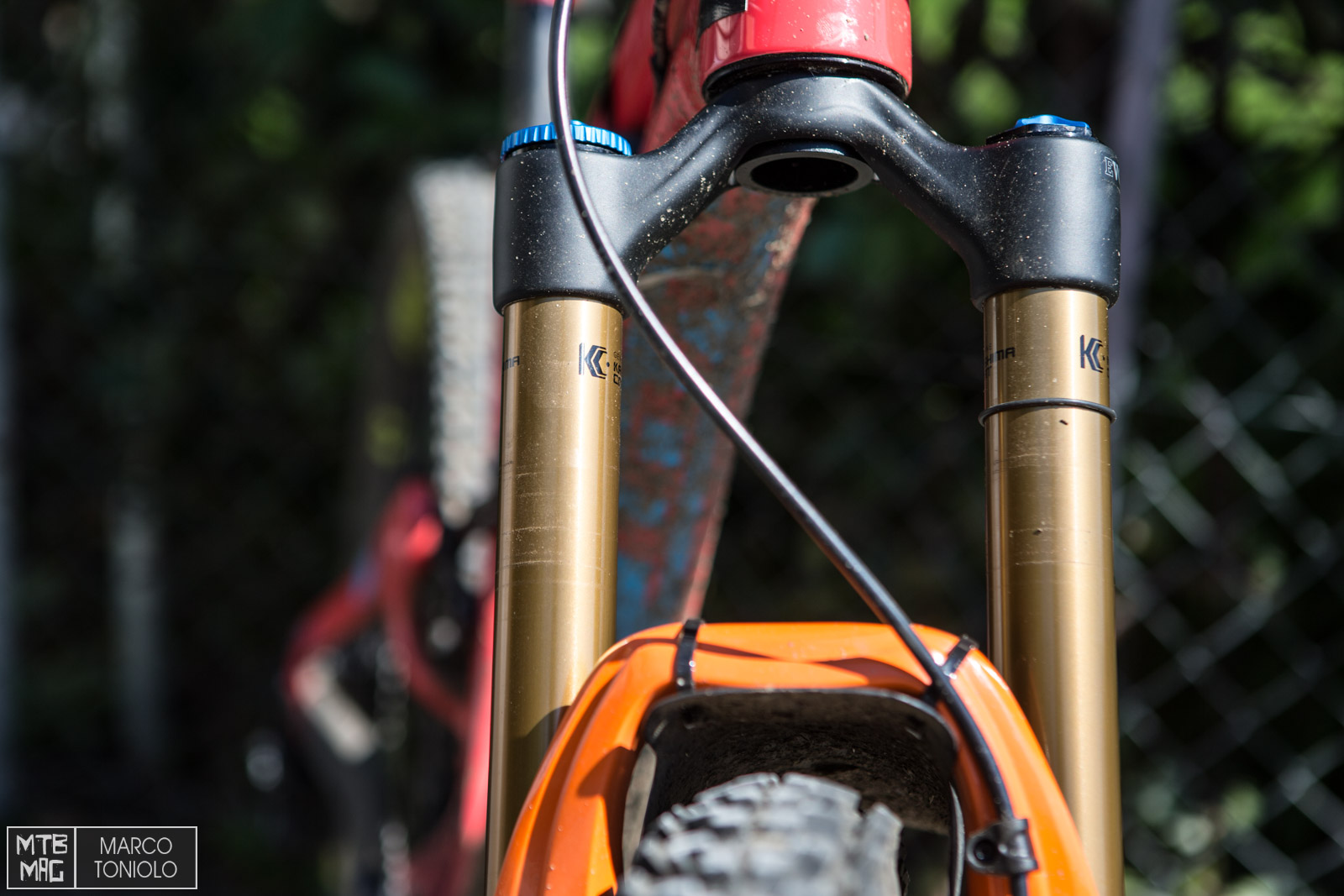
As you can see, the most important change is the increased negative chamber (EVOL), the same technology that you can find at the heart of Fox’s air sprung rear shocks. This provides greater linearity in the first 25% of stroke, which increases the sensitivity to small bumps and, according to Fox, the support in the mid-travel. Progressivity towards the end of the stroke gets set with more precision, using the volume reducers, which decrease the size of the positive chamber.
The video explains how the Float system works; which is the same as found in 32, 34 and 40. In the diagram below you can see the details and critical parts of the air spring.

As stated above, there are three cartridges available on the market. They are outlined and explained below in Fox’s words…
FIT HSC/LSC
The two acronyms stand for high and low speed compression, and refer to external adjusters on the right leg. This is the cartridge we used in our test.
LSC: 24 Clicks
HSC: 24 Clicks
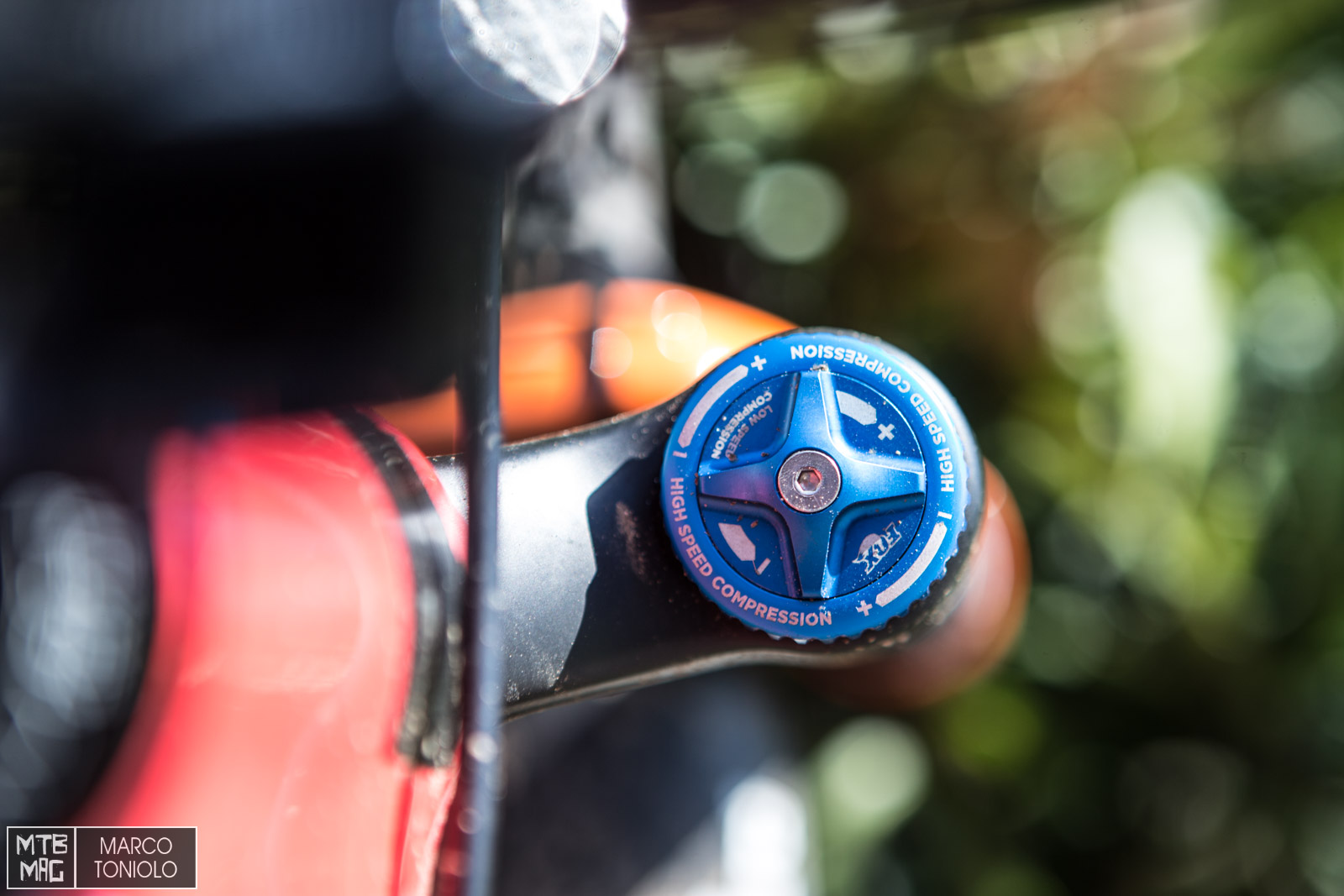
FIT 4
The patented FIT4 (FOX Isolated Technology) closed cartridge system provides three on-the-fly compression damping positions—Open, Medium, and Firm—to adapt to varying trail conditions.
• Three on-the-fly compression damping positions
• 22 clicks of additional low-speed compression adjust in the Open mode
• Low friction seal head design
• Dual circuit rebound allows more controlled return from hard hits and quicker recovery from successive impacts
• Updated tune
• New damper oil with lubricating PTFE for improved compression and rebound flow
Grip
Inspired by moto fork damping systems, FOX’s award- winning GRIP damper uses FIT sealed cartridge technology combined with a coil-sprung, internal floating piston. The system allows excess oil to purge through a specially designed port at the top of the damper to maintain consistent damping and increase durability. Performance Series forks provide Open, Medium, and Firm modes with additional micro-adjust between settings.
• FIT-based sealed cartridge damper with self- bleeding moto design
• Patent pending compression valve design gives wide range damping adjustment
• Blended LSC/HSC/Lockout
• Increased adjustment for this level of product
• Remote option available
• OE only
On the trail
Tested: Fox Float 36 HSC/LSC, 170mm travel, 15x110mm (boost) through axle, 27.5″.
The Fox 36 Float HSC/LSC is a pure enduro racing fork. The fact that it doesn’t have any knob for a quick lockout speaks for itself: the 36 has been engineered for the ones who want to be fast downhill, the uphills are just the necessary evil to reach the top of the climb. Luckily the Pivot Firebird we used for the test is equipped with the Fox X2 shock, which has a climb lever. This helps to stabilize the bike’s chassis when riding uphill.
The “old” 36 was already a benchmark in downhill performance, but it gave a quite brutal feedback from the terrain, which made the fork something better suited to hardcore riders who could handle some pain in the hands at the end of long downhills. Its sensitivity at the beginning of the stroke was good, but not enough for that plush feeling which people enjoy on other forks, even in the 34, if you want to stay in the same brand. With the new 36, Fox has been working in this direction and yes, it has become a “plush” fork that eats up every bump it encounters on the trail, no matter how large or small.
For sure the bigger negative chamber (Evol) helps to increase the initial sensitivity of the new 36, but we also shouldn’t forget about the lighter chassis. Anyway, at the end of the 900 vertical meters downhill of our test trail, we had pumped arms the same way we have with other enduro forks, but nothing more. The new 36 allowed us to enter – and exit – rock gardens at full speed with great confidence, without caring too much about line choice, or what rock we were going to hit.
The travel is very well supported in the mid stroke, with very effective low and high speed external settings. We used to ride with a completely open HSC and a LSC tuned on 4-5 clicks from completely open, but during our test rides we used harder settings and we can tell they are really effective in changing the behaviour of the fork on the trail.
Like all Fox racing forks, the 36 has a very marked progression curve. Let’s put it as a product manager told us during the old 36 product launch: ” Pro riders request progressivity, progressivity, progressivity“. Right, he said it three times. The tested fork has only one token (or spacer) in the positive chamber, but it is very progressive in the last 2 centimeters of travel, with big reserves when you need them, so that no bottom out would ever buck you off the bike. Don’t expect to use all the travel, because when the o-ring reaches the top of the “Kashima coating” logo, it means you have gone to the limit, and possibly a little bit further.
The 36 we tested has a 15mm through axle with quick release, and also here we noticed how Fox has worked on the fork with the average user in mind. Remember the old one, where you needed a 5 allen key to loose the 4 bolts that tightened the 20mm through axle? Maybe the 15mm axle is not as stiff as the old one (you can still have it, if you want), but fixing your tire or putting the bike in the car without the front wheel has become far more user friendly and speedy.
Conclusions
The Fox 36 has become less extreme, with an improved small bump sensitivity that, together with a lighter chassis, makes it more comfortable and less tiring on long downhills. The tested HSC/LSC model has been engineered for the rider who wants to be fast on the downhills, and shows less concern for climbing efficiency. The low and high speed compression settings are very powerful, just few clicks are enough to feel a big difference. The new 36 is very plush, supportive in the mid stroke and very progressive at the end of the travel.
The post [Tested] New Fox Float 36 appeared first on MTB-MAG.COM.


